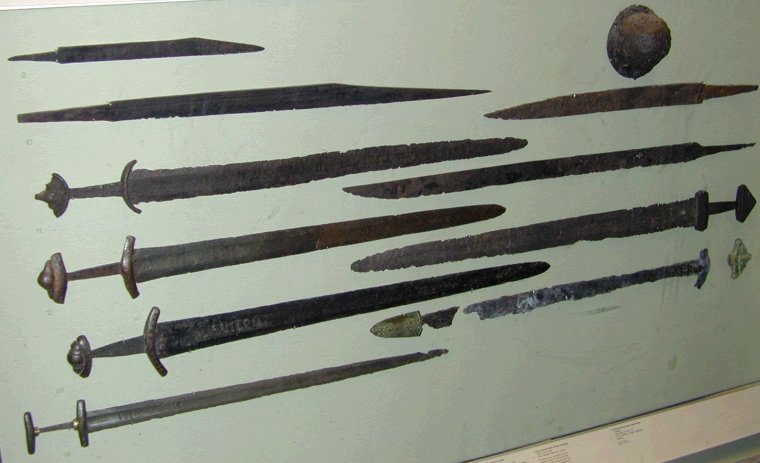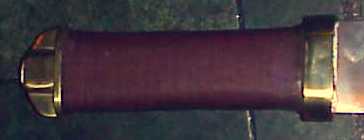Posts: 4 Location: Maine
Sun 07 Mar, 2004 12:48 pm
I have just recently started following this discussion regarding the
seax. I hope that the following is found to be useful, although it may turn out to be a red herring. I have the fragment of a single edged weapon, represented at one time as a 9th or 10th centuary dagger or child's sword, however I am looking in to the possibility that it is a seax. It has a small "tea-cosy" pommel (about 1.25 inches wide, 1 inch deep and .75 inches tall), a 3.5 inch long grip area/tang and a 3 inch wide lower guard. The hilt area is about 4.75 inches in total length. What remains of the blade is about 7/8 inch wide and 6 inches long, although I can see it was longer originally since the end is clearly broken and the ridge on the non-edged side of the blade extends all the way to the tip.
I am looking into the possibility that it could be a seax because of the single edged blade, the width of the blade, and the fact that the grip area is long enough to accomodate a man's hand. On the other hand, it does have a guard, tang and pommel that do not match my previous conception of a seax.
In answer to Jay's most recent question -- assuming the the blade on this piece wasn't much longer than six inches, the
distal taper appears to be about that typically seen with a single edged sword ... but take that with a grain of salt since I have no idea of whether this is a seax in the first place!
If it isn't viewed as hi-jacking Jay's topic, I would welcome any and all comments as to what this piece was and how old it could be.
 Attachment: 46.41 KB
Attachment: 46.41 KB





